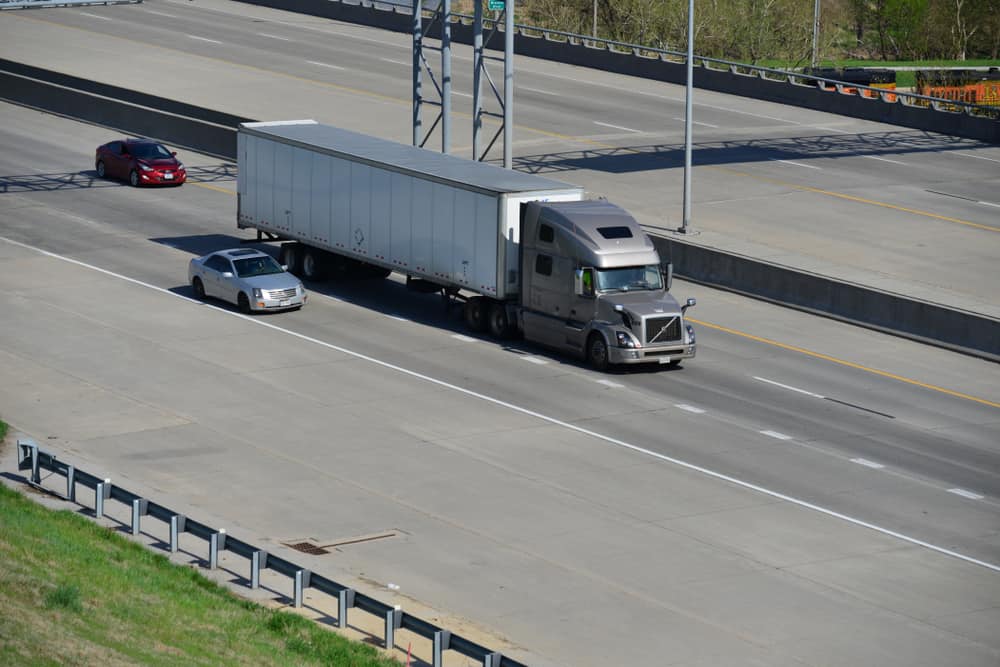
Spireon hosted a webinar in collaboration with FreightWaves earlier this week to explore the importance of building a fleet safety culture and how to do it the right way.
The number of people killed in crashes involving large trucks across the United States is on the rise, with the death toll jumping from 725 to 841, a staggering 16 percent, between 2016 and 2017, according to the latest National Highway Traffic Safety Administration compilation.
According to the FMCSA, large trucks were involved in a total of 475,000 crashes in 2016. While the vast majority of crashes do not result in fatalities, many come with injuries and most are accompanied by disrupted services and financial ramifications.
One of the most effective ways fleets can get their crash rates down and keep them low is by creating and fostering a positive safety culture. This week’s webinar focused on what safety culture actually is and how to improve it.
Matt Camden, Virginia Tech Transportation Institute Center for Truck and Bus Safety senior research associate, covered the following topics during the webinar:
-
What is safety culture and why is it important?
-
What is management’s role in improving safety culture?
-
How can you engage and empower employees to improve safety culture?
-
What steps are necessary to successfully improve safety culture?
Camden has 13 years of experience specializing in in occupational driving safety with an emphasis on assessing and evaluating safety programs to improve driver performance, making him uniquely qualified to help fleets build safety culture improvement strategies.
While the exact definition of safety culture is highly debated, Camden said there are a few characteristics found across the most successful safety cultures, including shared behavior patterns and beliefs related to safety, safety is considered a value, safety is part of the company’s identity, shared responsibility for safety and commitment to helping others perform safely.
Camden noted that there is a subtle difference between treating safety as a value and treating safety as a priority, as priorities can change when circumstances change, but values hold steady.
“Our values don’t change over time, but our priorities can be shifted based on different situations we’re in or what we’re doing at specific times,” Camden said.
Safety culture is important because it leads to safety programs and countermeasures, which lead to mitigation of unsafe behaviors. This ultimately leads to improved safety performance, according to Camden.
“If you have a poor safety culture, it’s going to result in you having poor safety programs or you poorly implementing those safety programs or drivers not accepting what you are doing,” he said. “So, that’s going to result in more risky driving behavior and unfortunately more crashes, more injuries and more fatalities.”
Camden said it is important that managers support safety from the top, while recognizing that safety culture is often driven by safe drivers who encourage their peers to behave similarly. He encouraged managers to value safety equal to production, talk about safety in meetings, practice safety leadership, have face-to-face safety meetings with drivers and emphasize safety improvement.
One of the most effective ways to increase driver safety is through empowerment, according to Camden. Empowering drivers involves sharing authority and responsibility, giving them an increased perception of control and sharing knowledge that gives them power to make decisions that directly influence organizational performance and direction.
“In general, fleets that empower their drivers may be related to cost control, organization flexibility and quality. So, those fleets that we see that do have empowered drivers, they typically have lower costs because those drivers are not being involved in as many crashes,” Camden said. “This is really because the empowered employees have a greater sense of personal control of what their doing. Empowered drivers are also more likely to stay within a fleet.”
Some strategies to increasing empowerment include trusting employees, giving supportive feedback, actively listening and allowing employees to develop personal goals.










